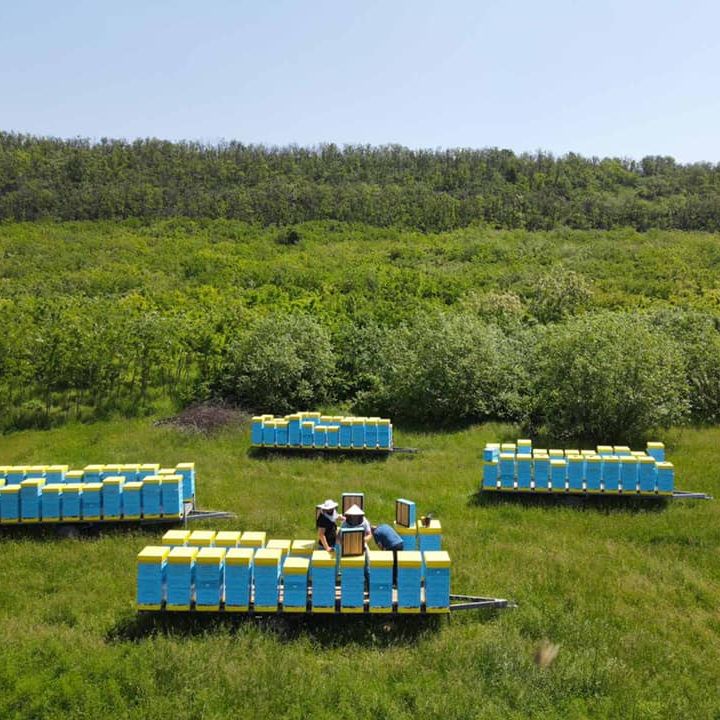Home
•
Blog
•
Beekeeping in Moldova
•
Terroir for Bees: Why Moldovan Honey Is Like Wine, Only Better

When you hear the word “terroir,” your mind probably goes straight to wine – to the soil, the climate, and the human touch that shape a distinct, unforgettable taste. But what if we told you that the same idea applies to honey? That Moldovan honey is not just sweet and healthy, but, like fine wine, a unique expression of the place it comes from – its flowers, soil, seasons, and the work of its beekeepers. At Baashoney, we don’t just make honey. We bottle the story of Moldova’s nature in every jar.
The term “terroir,” borrowed from French, describes the combination of natural and human factors that influence the quality and character of a product – in this case, honey. It includes soil, climate, elevation, local traditions, and even the microflora of a specific region.
Bees are the most sensitive “tasters” of terroir. They don’t gather nectar randomly – they choose flowers based on season, altitude, species, and even fragrance. That’s why each type of honey carries the signature of its origin. The hive becomes a nectar lab, and honey – its natural masterpiece.
Moldova has all the right ingredients for authentic, high-quality honey: rich meadows, ancient orchards, linden and acacia forests, lands untouched by intensive farming, and an impressive variety of wildflowers.
Our climate – with warm summers and mild winters – ensures a long harvest season, ideal for producing diverse, flavorful honey.
Northern regions like Soroca or Dondușeni yield sweeter honey with floral notes, thanks to clover and sunflower fields. In the south – Cahul, Cantemir – honey becomes denser, bolder, with hints of wild mint and coriander. And in the heart of Moldova, among the Codri forests, we get linden honey – smooth, fragrant, calming, with a scent that stays with you.
Honey is not an industrial product. It’s a living creation, influenced by what grows around the hive at a particular moment. Bees visit thousands of flowers to make just a few spoons of honey, and the taste changes from month to month, from hill to hill.
Acacia honey, for example, is light and delicate, reflecting the white blossoms that bloom early in the summer. Autumn polyfloral honey is darker, deeper in flavor, with a slight bitterness – a sign that the bees have visited medicinal plants like wormwood, thyme, or yarrow.
This variety makes Moldovan honey not only special, but truly one of a kind.
The beekeeper plays a vital role in the quality of honey. At Baashoney, we work with professionals who respect nature and the bees. We don’t force production, we don’t use chemicals, and we never harvest the honey too early.
Each hive is cared for attentively. After harvesting, the honey is processed at low temperatures to preserve its natural enzymes, aroma, and texture. We don’t add anything. We don’t take anything away. What the bees make is what ends up in the jar.
Because it’s pure, with no additives. Because behind every jar is not just a flower, but a whole story. Because it doesn’t need flashy marketing or shiny packaging. One taste is enough to know it’s different. Because it’s safe for both children and the elderly. Because it’s timeless. Because it carries a little piece of this land’s soul.
At Baashoney, we don’t just produce honey. We nurture a deep respect for nature. We believe true quality comes from patience, dedication, and care. So if you want to experience the real taste of Moldovan honey – try a jar of Baashoney. Let the flavors of this land tell you their story.